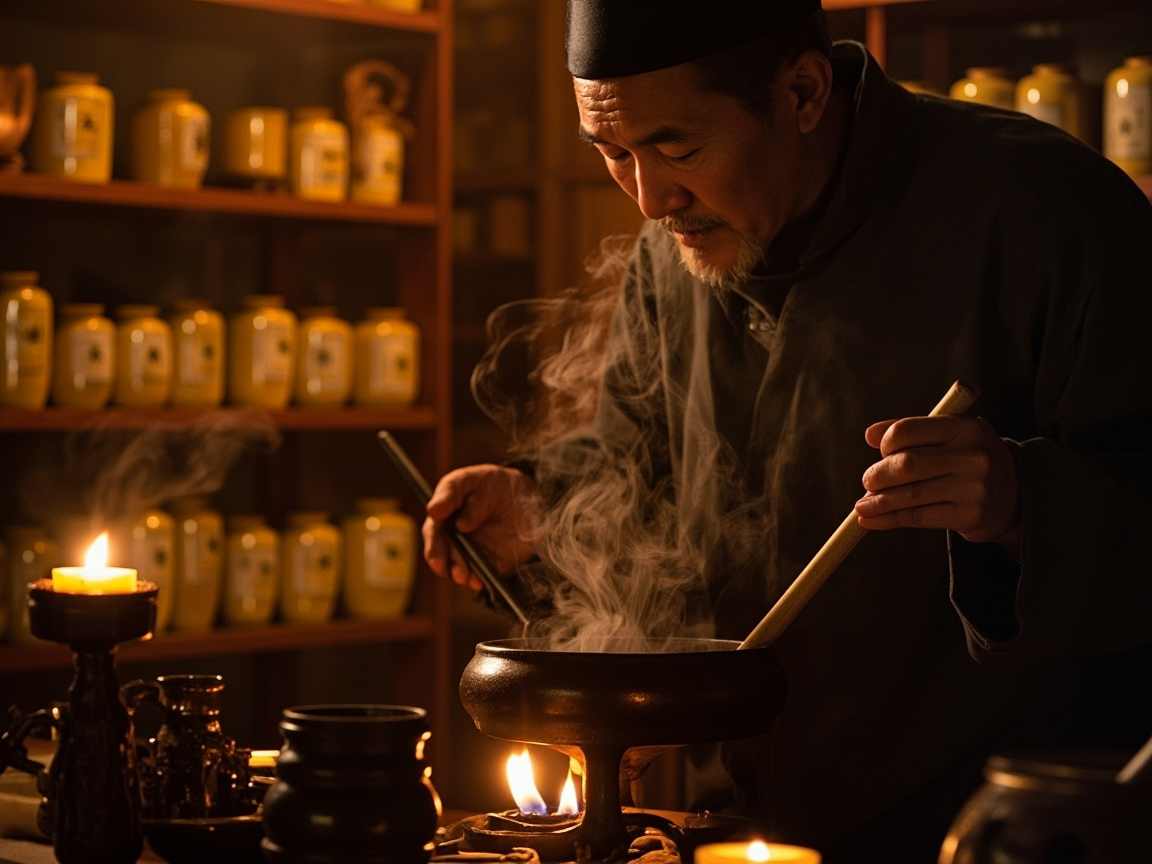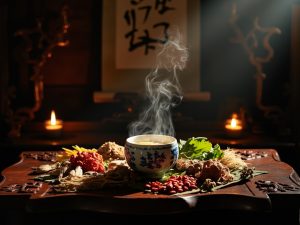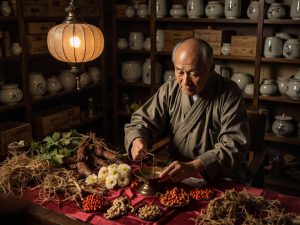Table of Contents
ToggleZhigancao Tang – Nan Kaiyang
Author: Nan Kaiyang Editor: Gu Yuxi Translator: Gu Yuxi
Original Text:
Shanghan Lun Clause 177: For cold damage with intermittent or irregular pulse (jie dai mai) and palpitations, Zhigancao Tang is indicated.
Etiology, Location, and Textual Research:
Etiology: Primarily due to yin-blood deficiency, leading to a lack of nourishment for the heart vessels. Location: According to Mr. Hu Xishu’s view, it is due to stomach deficiency and insufficient heart yin-blood. Textual Research: Gufang Xuanzhu states: “The sweetness of ginseng and hemp seeds moistens spleen fluids; the salty and bitter taste of rehmannia and donkey-hide gelatin nourishes liver fluid. Fearing that the turbid taste of heavily used rehmannia and ophiopogon might not ascend, baked licorice, with its thick qi, and cinnamon twig, being light and ascending, are made the chief herbs to carry rehmannia and ophiopogon upwards to relieve lung dryness. Aromatic clear wine (Qing Jiu) is used as an assistant to enter the blood, guiding rehmannia and ophiopogon back to the heart to restore the pulse. Ginger and jujube are still used to harmonize the ying (nutritive qi) and wei (defensive qi), so that fluids can fully supply the heart and lungs. Diseases of the vessels primarily involve the heart channel, hence it is also known as ‘Fumai’ (Restore the Pulse) Decoction.”
Pharmaceutical Knowledge:
1. Baked Licorice (Zhigancao): Should be stir-fried licorice. Jinkui Yuhan Jing mentions “stir-fry until yellow,” indicating that the processing method for licorice in the Han dynasty was stir-frying, not the honey-baking method of later generations.
2. Rehmannia (Dihuang): Before the Tang dynasty, rehmannia was always used fresh. Jinkui Yaolue even mentions “rehmannia juice.” Currently, dried rehmannia is generally used as a substitute.
3. Hemp Seeds (Maren): Should be fire-fried hemp seeds (Huomaren).
4. Clear Wine (Qing Jiu): Refers to glutinous rice wine or yellow wine, taking its clear nature that ascends while turbidity descends. Decoction with both wine and water is an ingenious method for preparing tonifying formulas for deficient syndromes. Long decoction with a large amount of wine and water allows the tonifying agents to be slowly released, enhancing their efficacy and moderating their strength. Additionally, Bencao Beiyao (Compendium of Materia Medica) records that “rehmannia, when dug fresh, can be mashed into juice and drunk, or processed with wine, so it does not harm the stomach.”
Understanding the Formula:
I.
I believe the statement that “the drug with the largest dosage plays the main therapeutic role” is biased. The effectiveness of each drug and its absolute dosage are incomparable; a mechanical understanding and comparison of drug dosages are not advisable. Furthermore, the baked licorice in the formula is used in large doses, typical for Shanghan Lun formulas, while Rehmannia glutinosa (Sheng Dihuang) is used up to one jin (about 500g), and clear wine (Qing Jiu) is used in an even larger quantity of seven sheng (about 1400ml).
II.
Refer to the “Shizao Tang” (Ten Jujube Decoction), where the jujube (dazao) has the highest dosage, but it serves to moderate the drastic effects and protect the stomach. It acts as an assistant or envoy drug, not a chief drug.
III.
(1) What is the Chief Herb?
From the original text, intermittent/irregular pulse and palpitations are the main symptoms, and the clause is recorded in the Shanghan Lun‘s external cold damage section, which is at the beginning of the Six Channels. This indicates that the pathogenesis is an external invasion. However, there are no exterior evil symptoms like “floating pulse,” “fever,” or “aversion to cold,” pointing towards an internal issue. The external evil has not resolved, turning into internal heat, injuring the yin-blood. When yin-blood is deficient, yang has nothing to rely on and disperses. When yin-blood is deficient, the Shaoyin Heart Master loses its nourishment, and floating yang qi disturbs the heart spirit, hence “palpitations.” When yin and yang do not connect smoothly, the pulse qi is discontinuous, leading to intermittent or irregular pulse. Among these, yin-blood deficiency and floating yang qi are the direct material basis for “palpitations and intermittent/irregular pulse,” with yin-blood insufficiency being the direct cause of floating yang qi.
(2) Reference to Shanghan Lun Clause 4:
“On the first day of cold damage, if the Taiyang receives it, and the pulse is quiet, it will not transmit. If there is a slight desire to vomit, or vexation and agitation with a rapid and urgent pulse, it indicates transmission.”
(3) From the perspective of the chief herb corresponding to the main symptoms:
The chief herb should currently be Sheng Dihuang, which drastically tonifies yin-blood without the tendency to retain evil, rather than Zhigancao, which tonifies qi, strengthens the heart, and relieves urgency. All herbs combined are warming without drying, nourishing without being cloying, collectively achieving the effects of supplementing qi and nourishing blood, and enriching yin to restore the pulse.
IV.
This formula is composed of the Guizhi Qu Shaoyao Tang (Cinnamon Twig Decoction with omit Peony) base, combined with yin-nourishing herbs. Guizhi Qu Shaoyao Tang addresses upper repletion and lower deficiency, with chest yang not invigorating and internal retention of exterior evil. This formula, however, addresses the syndrome of yin-blood deficiency caused by the further development of evil heat into the heart.
Disclaimer:
The experiences and insights shared above represent the author’s personal usage and understanding, and are provided for reference only as part of academic exchange. Please do not blindly replicate or apply them; any consequences arising from such actions are solely your responsibility. As individual constitutions vary, medication should be tailored accordingly. It is advisable to use such treatments under the guidance of a qualified physician. If you have additional experiences to share, comments and submissions are welcome.
If you appreciate my article, please give it a like.
If you are a generous and affluent individual, please consider making a donation!
Your recognition is my greatest motivation to continue writing—thank you very much!
USD Donation Button —
A RMB donation button is available below.
 微信赞赏
微信赞赏 支付宝赞赏
支付宝赞赏




